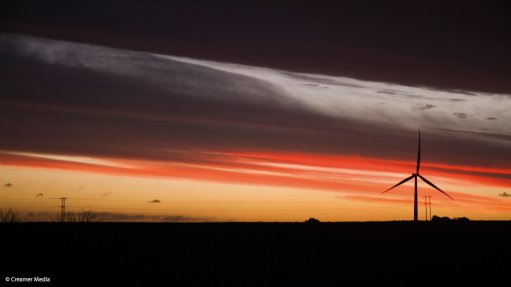
Photo by: Duane Daws
Global installed wind capacity shot up by 44.2% in 2014 and is expected to continue showing good growth for this year.
Global Wind Energy Council CEO Steve Sawyer told delegates attending the WINDaba conference, in Cape Town, that the wind energy industry had grown fourfold since 2007, with yearly growth rates of 24.9% achieved over the past 18 years.
He said China was leading the charge for wind energy, while Germany, the US, Brazil, India and Canada were also among the countries with the highest installed wind energy capacity.
Sawyer pointed out that wind energy currently contributed to 3% of global electricity and that this would likely rise to between 6% and 8% by 2020 and to between 18% and 20% by 2030.
He added that wind energy could potentially contribute one-third of all electricity by 2050, and that “if we are to get to grips with the climate problem” this was a central part of the solution.
“If costs continue to come down, wind is the cheapest way to add electricity in a growing number of markets,” he said.
Sawyer was upbeat about South Africa’s prospects for increasing wind energy.
Despite concerns about delays involving finance and grid connections, he said South Africa continued to appeal to investors.
“The international appetite for investing in South Africa is quite large. It would take something dramatic to kill that off. The potential for substantial investments in plants, equipment and infrastructure just gets larger.”
South African Wind Energy Association chairperson Heather Sonn said the domestic wind industry had shown it could contribute to overcoming electricity shortages.
“We now have 13 fully operational wind farms, using 400 turbines at a price that is almost 40% cheaper than the new builds on coal, and which is fully funded by the private sector,” she added.
Danish Business and Growth Minister Troels Lund Poulsen, meanwhile, said his government remained very supportive of South Africa’s moves into wind energy.
The Danish government had supported South Africa in developing a world-first Wind Atlas, a high-definition map that shows independent power producers the best sites to develop wind energy projects.
South Africa was learning valuable lessons from Denmark, which aimed to be completely weaned off fossil fuels by 2015, with wind as the main energy contributor.
Concentrations of wind power in Denmark were unparalleled anywhere else in the world, with almost 40% of Denmark currently powered by wind energy. This was expected to increase to 50% by 2020.
Poulsen said one in every four wind turbines in operation worldwide were based on Danish technology, while turbines also made up a powerful export earner for the Danish economy.